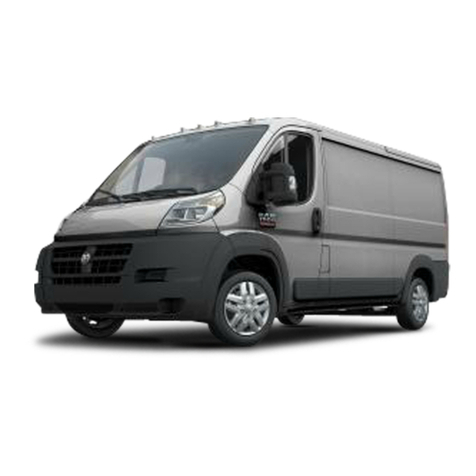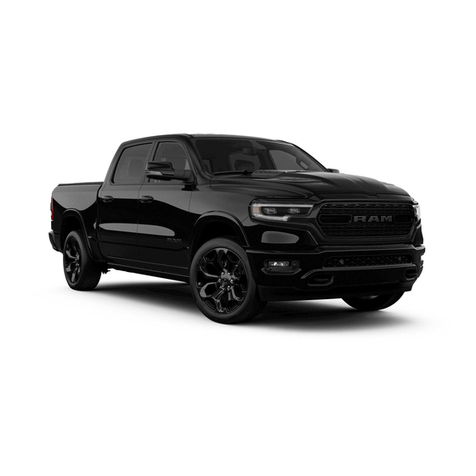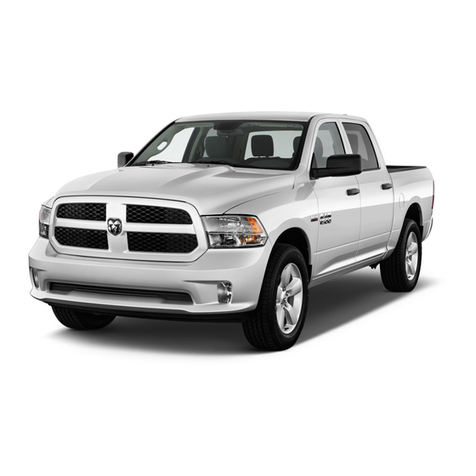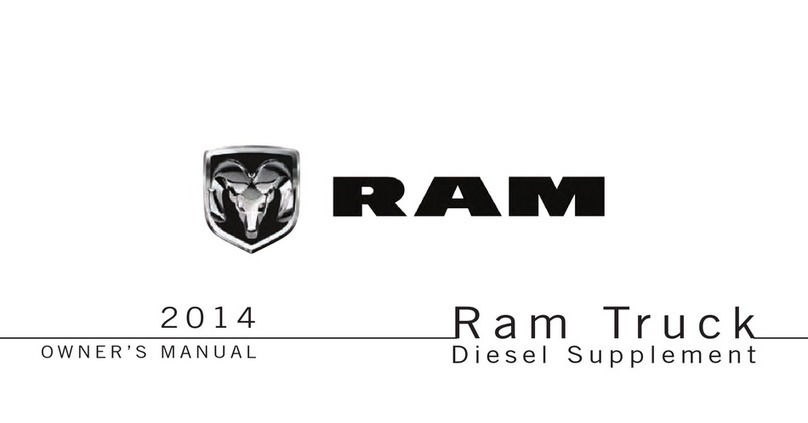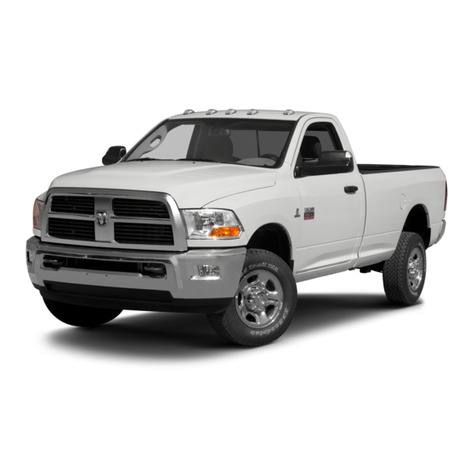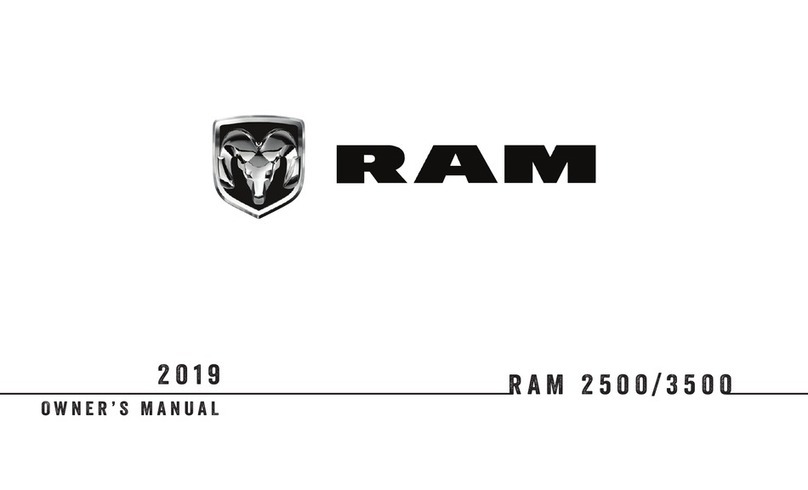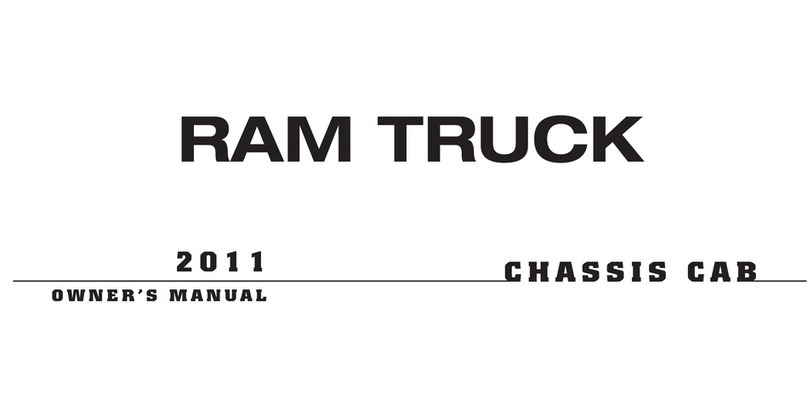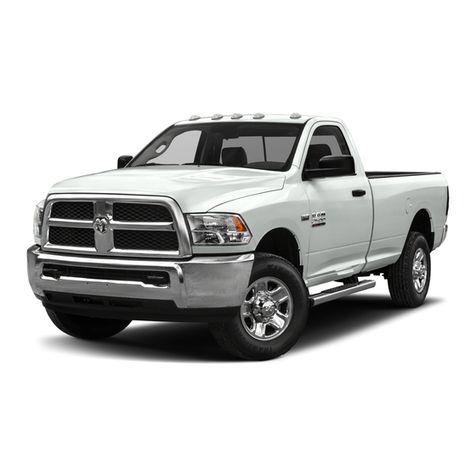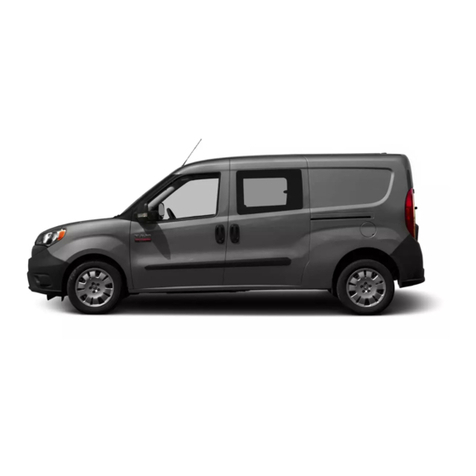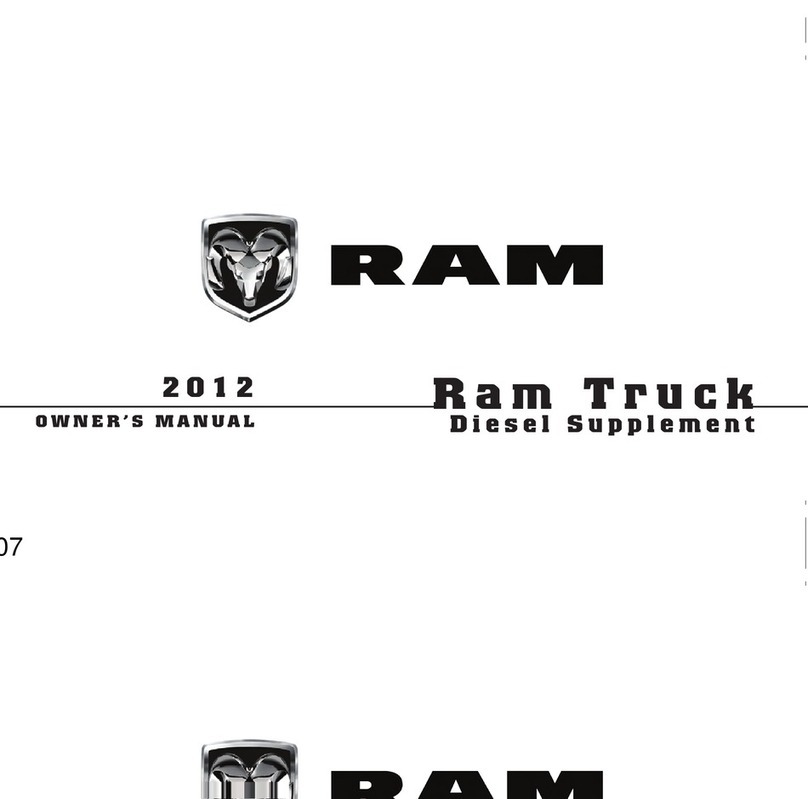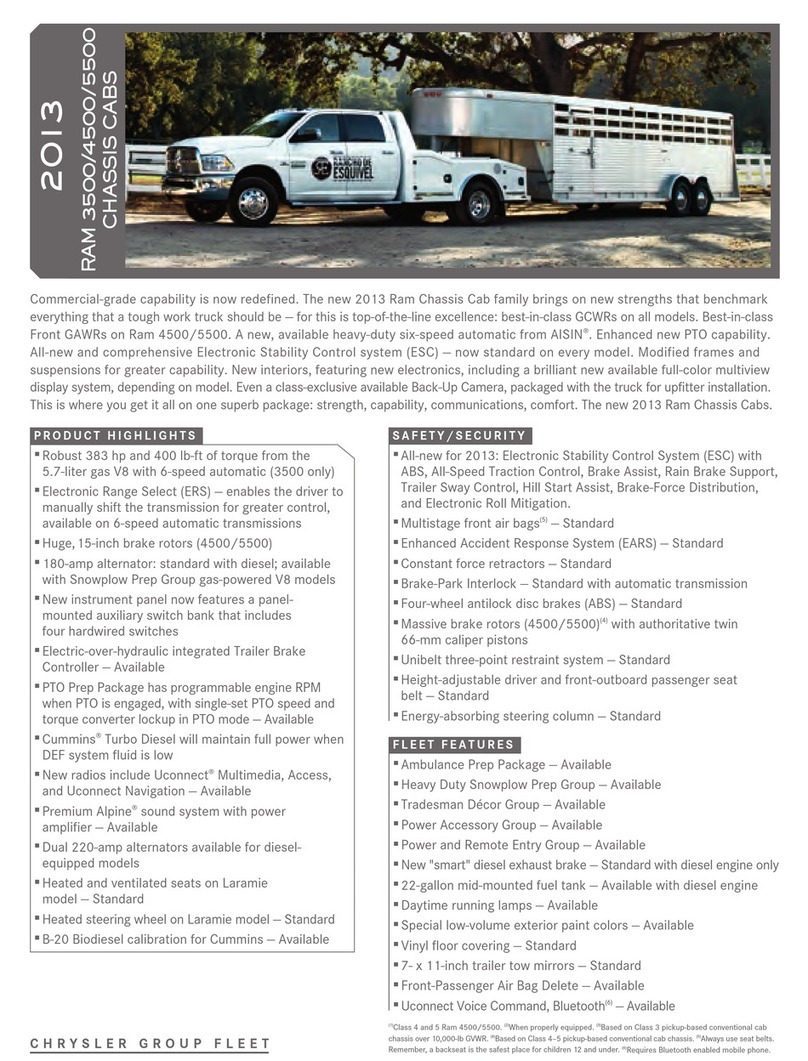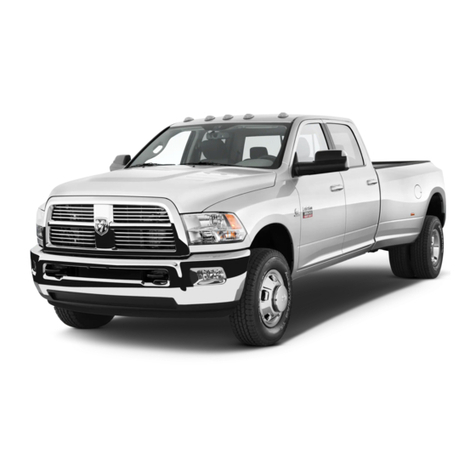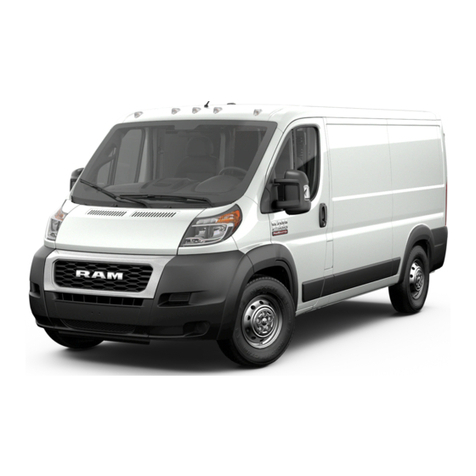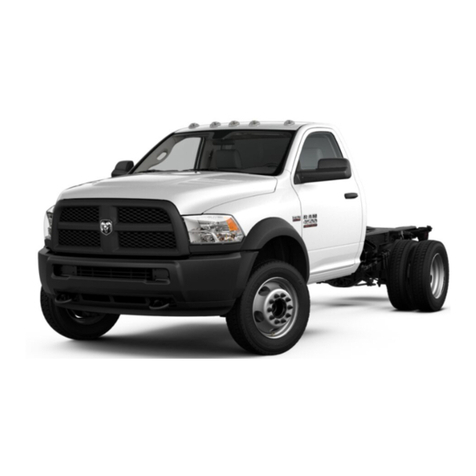
INTRODUCTION/WELCOME
WELCOME FROM FCA US LLC .......2
CONTROLS AT A GLANCE
DRIVER COCKPIT ...............4
INSTRUMENT CLUSTER ...........6
GETTING STARTED
KEYFOB ....................8
SEAT BELT SYSTEMS ............8
SUPPLEMENTAL RESTRAINT SYSTEM
(SRS) — AIR BAGS .............9
CHILD RESTRAINTS ............14
HEAD RESTRAINTS .............16
FRONT SEATS ................17
HEATEDSEATS ...............23
TELESCOPING STEERING COLUMN . . 24
OPERATING YOUR VEHICLE
ENGINE BREAK-IN
RECOMMENDATIONS ............25
MANUAL CLIMATE CONTROLS ......26
MULTIFUNCTION LEVER ......... 27
INTERIOR LIGHTS .............28
WINDSHIELD WIPERS AND
WASHERS ..................30
ELECTRONIC SPEED CONTROL ..... 32
PARKSENSE REAR PARK ASSIST ....35
PARKVIEW REAR BACK-UP CAMERA . . 35
ELECTRONICS
YOUR VEHICLE'S SOUND SYSTEM . . . 36
IDENTIFYING YOUR RADIO ........ 38
Uconnect RH3 ................39
Uconnect 5.0 ................. 41
UCONNECT PHONE ............53
STEERING WHEEL AUDIO CONTROLS
..62
ELECTRONIC VEHICLE INFORMATION
CENTER (EVIC) ...............62
PROGRAMMABLE FEATURES .......63
POWER OUTLETS ..............64
UTILITY
TRAILER TOWING WEIGHTS (MAXIMUM
TRAILER WEIGHT RATINGS) .......66
RECREATIONAL TOWING (BEHIND
MOTORHOME, ETC.) ............66
DIESEL
DIESEL ENGINE BREAK-IN
RECOMMENDATIONS ...........68
DIESEL ENGINE STARTING
PROCEDURES ................68
AUTOMATED MANUAL TRANSMISSION —
DIESEL ONLY ................70
EXHAUST REGENERATION ........74
COOL-DOWN IDLE CHART .........75
ADDING FUEL ................76
DIESEL EXHAUST FLUID .........77
WHAT TO DO IN EMERGENCIES
ROADSIDE ASSISTANCE ..........80
INSTRUMENT CLUSTER WARNING
LIGHTS ....................80
INSTRUMENT CLUSTER INDICATOR
LIGHTS ....................84
IF YOUR ENGINE OVERHEATS ......86
JACKING AND TIRE CHANGING .....87
JUMP-STARTING PROCEDURES ....100
SHIFT LEVER OVERRIDE ........104
TOWING A DISABLED VEHICLE ....104
FREEING A STUCK VEHICLE ......105
ENHANCED ACCIDENT RESPONSE
SYSTEM (EARS) .............. 106
EVENT DATA RECORDER (EDR) ....106
MAINTAINING YOUR VEHICLE
TO OPEN AND CLOSE THE HOOD . . . 107
ENGINE COMPARTMENT — 3.6L . . . 108
ENGINE COMPARTMENT — 3.0L
DIESEL ...................110
FLUID CAPACITIES — GASOLINE
ENGINE ...................112
FLUIDS, LUBRICANTS AND GENUINE
PARTS — GASOLINE ENGINE .....112
FLUID CAPACITIES — DIESEL
ENGINE ...................114
FLUIDS, LUBRICANTS AND GENUINE
PARTS — DIESEL ENGINE ....... 114
MAINTENANCE PROCEDURES .....116
MAINTENANCE SCHEDULE —
GASOLINE ENGINE ............116
MAINTENANCE SCHEDULE —
DIESEL ENGINE ..............121
FUSES ...................126
TIRES — GENERAL INFORMATION . . 129
REPLACEMENT BULBS .........132
CUSTOMER ASSISTANCE
FCA US LLC CUSTOMER CENTER . . . 133
FCA CANADA INC. CUSTOMER
CENTER ..................133
ASSISTANCE FOR THE HEARING
IMPAIRED .................133
PUBLICATIONS ORDERING .......133
REPORTING SAFETY DEFECTS IN THE
UNITEDSTATES ..............134
MOPAR® ACCESSORIES
AUTHENTIC ACCESSORIES BY
MOPAR ...................135
FAQ’s
FREQUENTLY ASKED QUESTIONS . . . 136
INDEX
...................137
TABLE OF CONTENTS



